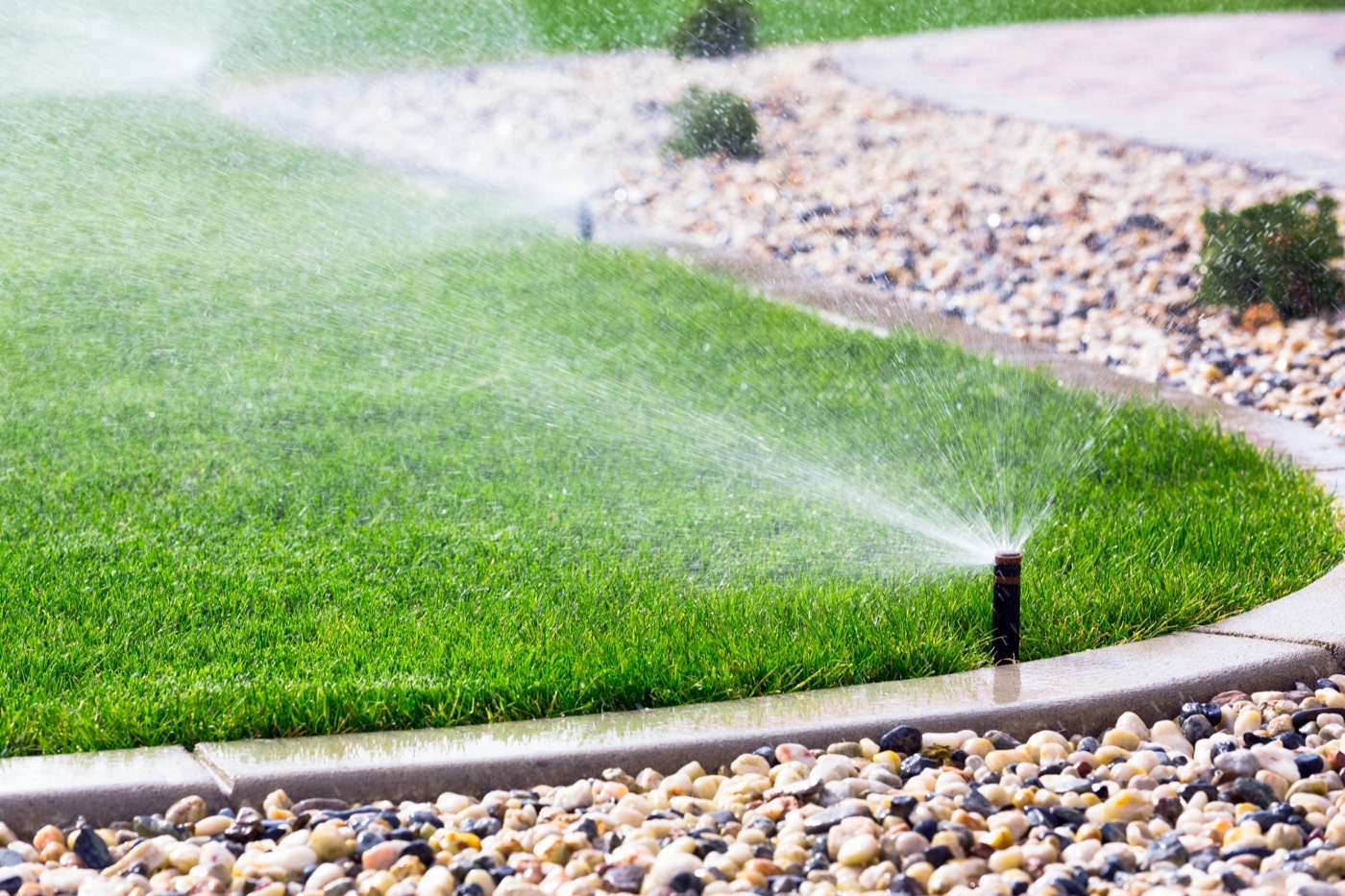Keeping your lawn and landscape flourishing isn’t just about sunshine and soil. Proper hydration is key to vibrant plants, lush green grass, and a healthy outdoor space. But with so many irrigation system options available, choosing the right one can feel overwhelming.
This guide dives into the three most popular irrigation systems—sprinkler systems, drip irrigation, and bubbler irrigation—to help you select the perfect solution for your unique landscaping needs.
The Traditional Favorite: Sprinkler Systems
Sprinkler systems are a classic choice for watering lawns. They consist of a network of underground pipes and sprinkler heads that spray water in a designated pattern.
Pros
- Even coverage: Sprinklers provide consistent water distribution across large, open areas like lawns.
- Variety of options: From rotors for expansive lawns to pop-up sprinklers for targeted watering, there’s a sprinkler head type for nearly every need.
- Automation: Many sprinkler systems can be connected to timers and sensors, allowing for automatic watering based on a schedule or weather conditions.
Cons
- Water waste: Traditional sprinkler systems can waste water due to overspray, runoff, and evaporation, especially on windy days or when watering early or late in the day.
- Limited customization: While offering even coverage, sprinkler systems may not be suitable for areas with diverse plant needs or irregularly shaped landscapes.
- Installation challenges: Installing an underground sprinkler system can be a complex and disruptive process, especially for established landscapes.
The Water-Wise Choice: Drip Irrigation
Drip irrigation systems are a water-efficient option ideal for delivering targeted watering directly to plant roots. They utilize a network of low-flow tubing with emitters or drippers positioned near each plant.
Pros
- Water conservation: Drip irrigation delivers water directly to the root zone, minimizing evaporation and water waste.
- Customization: Drip systems are highly customizable, allowing you to adjust watering based on specific plant needs. This is perfect for landscapes with a variety of plants with different water requirements.
- Reduced weed growth: By focusing water on the root zone, drip irrigation discourages weed growth in unwanted areas.
- Easy installation: Drip irrigation systems are generally easier to install yourself compared to underground sprinkler systems. They can be installed above ground or slightly buried for a more discreet look.
Cons
- Limited coverage: Drip irrigation is not ideal for evenly watering large, open areas like expansive lawns.
- Clogging potential: Drip emitters can become clogged with minerals or debris over time, requiring maintenance to ensure proper water flow.
- Initial cost: The upfront cost of materials for a drip irrigation system can be slightly higher than a sprinkler system for a comparable area.
The Targeted Watering Solution: Bubbler Irrigation
Bubbler irrigation systems are a hybrid option that combines elements of sprinklers and drip irrigation. They utilize small, localized sprinklers that emit a slow flow of water in a concentrated area.
Pros
- Targeted watering: Bubblers are ideal for watering plants with high water needs, like trees, shrubs, and foundation plantings, without soaking surrounding areas.
- Reduced evaporation: The low-flow bubblers minimize water loss due to evaporation compared to traditional sprinklers.
- Easy installation: Bubbler systems are generally easy to install, often requiring minimal digging or disruption to your landscape.
Cons
- Limited coverage: Bubblers are not suitable for watering large open areas.
- Potential for overwatering: If not positioned or adjusted correctly, bubblers can oversaturate the soil around the target plant.
- Clogging potential: Similar to drip emitters, bubbler heads can become clogged with minerals or debris, requiring maintenance.
Choosing the Right System for You
Here are some key factors to consider when selecting the best irrigation system for your landscape:
- Landscape size and shape: For large, open lawns, sprinkler systems might be the most efficient choice. Drip irrigation is ideal for irregularly shaped landscapes with diverse plant needs, while bubblers excel at targeted watering for specific plants.
- Water conservation goals: If water efficiency is a priority, drip irrigation is the clear winner.
- Plant types: Consider the specific water needs of your plants. Drip irrigation is ideal for plants with varying water requirements, while bubblers are perfect for high-water-demand plants.
- Budget and DIY skills: While sprinkler systems might have a lower upfront material cost, their installation can be more complex. Drip irrigation and bubbler systems are generally easier to install yourself.

